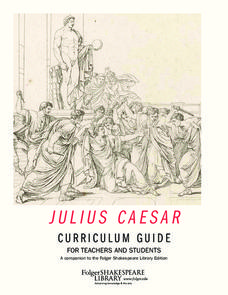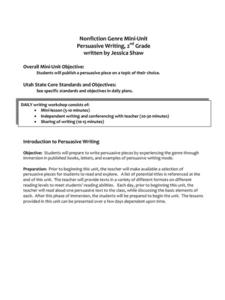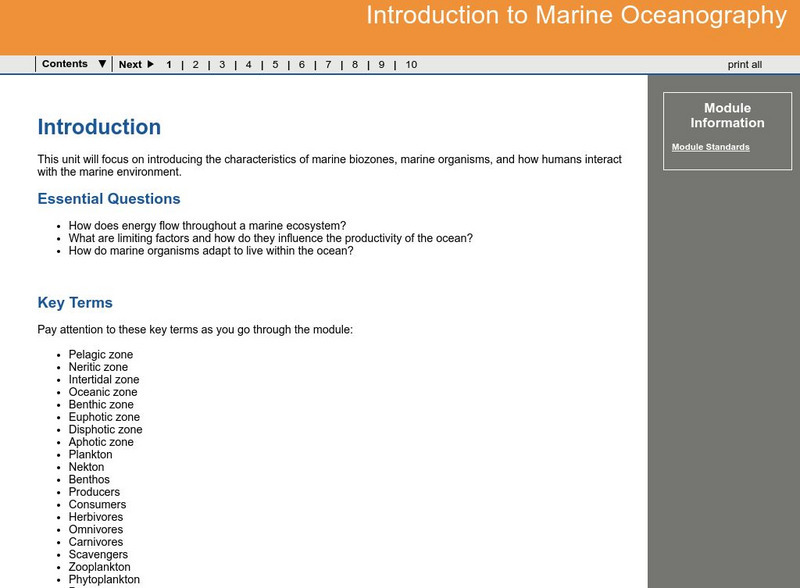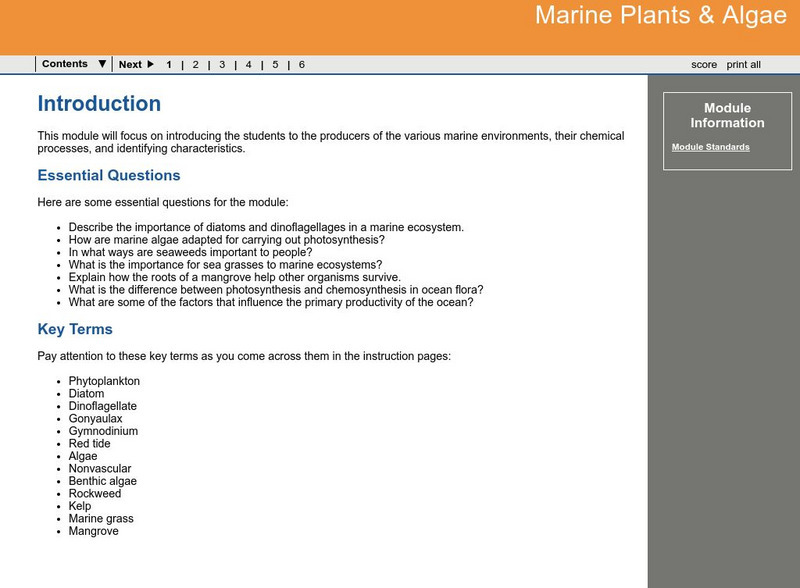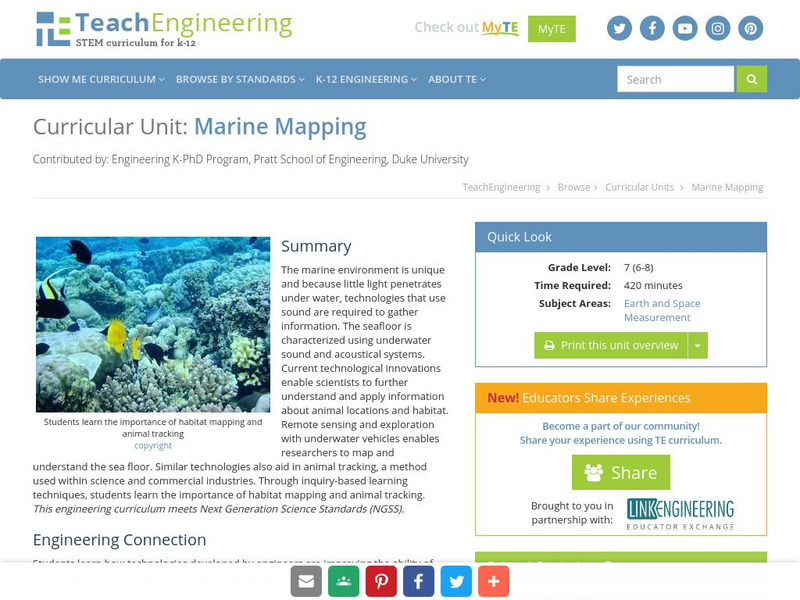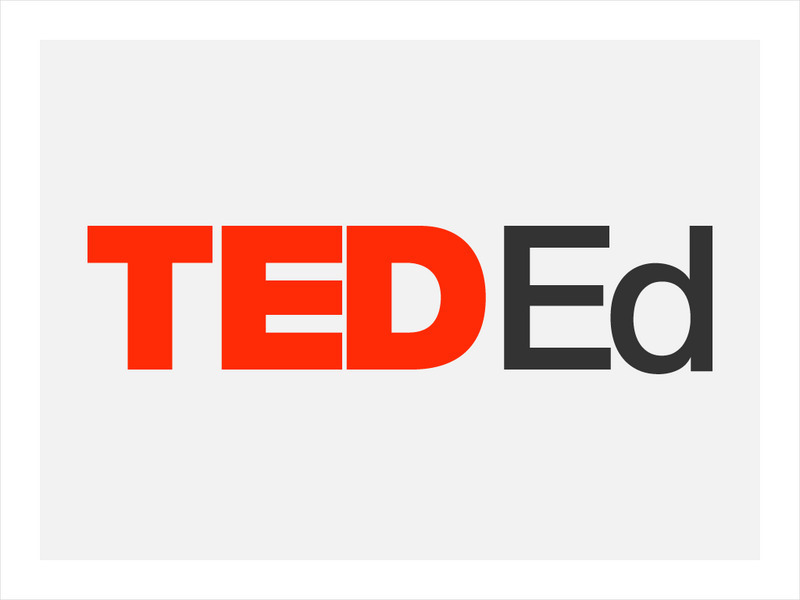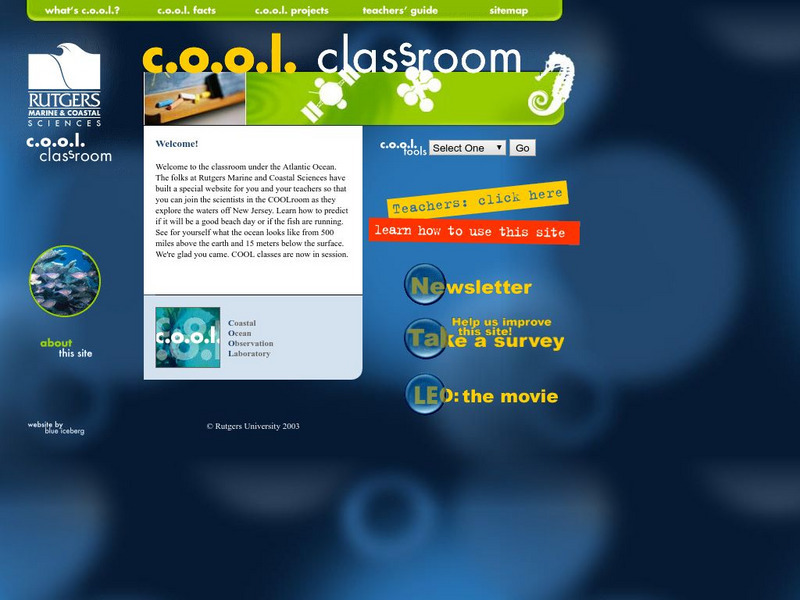Curated OER
Ocean Life
Students explore the topics of ocean water salinity, ocean life zones, marine life classification, and ocean food chains. They observe demonstrations, conduct experiments, complete quizzes and handouts, and analyze key vocabulary.
Curated OER
Ecosystems
A critical look into the structure and function of ecosystems is here for young learners as a series of lessons and worksheet activities. Topics covered include land-based and marine ecosystems, connections to the water cycle, food...
Curated OER
Oceans
Students complete a unit of activities to learn about ocean life as well as improve their math and measurement skills. In this ocean life and math skills lesson, students complete 8 lessons to learn about ocean life and complete...
Curated OER
At the Beach
Students answer a variety of question about going to the beach. They discuss vocabulary words associated with the beach. They listen to some music of waves and seagulls while the teacher reads a short story. They pretend to pack a...
Folger Shakespeare Library
Julius Caesar Curriculum Guide
Julius Caesar need not be Greek to kids. The background information and suggestions for teachers, as well as the activities for learners, make this curriculum guide a must-have for your Shakespeare curriculum library.
Curated OER
Sustainability and Extinction
Galapagos Penguins are the only penguins on earth that live north of the equator (in the wild). In this last lesson plan a discussion on how the Galapagos islands developed their populations and diversity sparks the introduction. Two...
University of Southern California
Human Impact on the Sea
How far does the human hand reach? Five interactive lessons lead classes through a unit exploring the human impact on ocean resources, pollution, and even extinction. Learners discover how their decisions affect the ocean...
University of Southern California
What Lives In The Ocean?
One of the most diverse environments on Earth is the ocean. Young scientists explore the living things found in the ocean during an exciting seven-lesson unit. Their study includes organisms from plankton to invertebrates...
Curated OER
Nonfiction Genre Mini-Unit: Persuasive Writing
Should primary graders have their own computers? Should animals be kept in captivity? Young writers learn how to develop and support a claim in this short unit on persuasive writing.
University of Southern California
What Is The Ocean?
Go on a tour of the ocean through the lens of a scientist. Learners read maps of the ocean floor, study tide behavior, examine wave motion, and analyze components of soil. Each lesson incorporates a hands-on component.
Georgia Department of Education
Ga Virtual Learning: Introduction to Marine Oceanography
Students learn about marine biozones, marine organisms, and how humans interact with the marine environment.
Georgia Department of Education
Ga Virtual Learning: Marine Vertebrates
Learn about vertebrates found in the ocean, their individual methods of adaptations, identifying characteristics and contributions to the marine ecosystem.
Georgia Department of Education
Ga Virtual Learning: Marine Plants & Algae
Students are introduced to the producers of the various marine environments, their chemical processes, and identifying characteristics.
Georgia Department of Education
Ga Virtual Learning: Marine Invertebrates
Students learn about invertebrates found in the ocean, their individual methods of adaptations, identifying characteristics, and contributions to the marine ecosystem.
CK-12 Foundation
Ck 12: Episd: Aquatic Organisms
[Free Registration/Login may be required to access all resource tools.] Study the research of aquatic organisms and how they move and live. Be prepared to give examples of the types of these wet organisms.
TeachEngineering
Teach Engineering: Marine Mapping
The marine environment is unique and requires technologies that can use sound to gather information since there is little light underwater. The seafloor is characterized using underwater sound and acoustical systems. Current...
TED Talks
Ted: Ted Ed: How Giant Sea Creatures Eat Tiny Sea Creatures
Kelly Benoit-Bird discusses new research that shows large sea animals actually herding their tiny food into big, bitable chunks. [6:22]
CK-12 Foundation
Ck 12: Biology: Aquatic Organisms
[Free Registration/Login may be required to access all resource tools.] Overview of aquatic organisms.
CK-12 Foundation
Ck 12: Earth Science: Marine Food Chains
[Free Registration/Login may be required to access all resource tools.] Describes the marine food chain.
TED Talks
Ted: Ted Ed: The Surprising (And Invisible) Signatures of Sea Creatures
On land, animals leave footprints that tell us a lot about their size, form and capabilities. Marine organisms do this too, but these footprints are harder to see since water is translucent. Bioengineer Kakani Katija explains how she...
Language Guide
Language Guide: Los Animales Del Mar (Spanish)
This resource provides colorful pictures of sea animals interact with audio and the written vocabulary word as you move your mouse over the picture. This vocabulary would compliment a science unit on marine life.
CK-12 Foundation
Ck 12: Earth Science: Types of Marine Organisms
[Free Registration/Login may be required to access all resource tools.] Provides an overview of the organisms living in the sea.
Other
Rutgers Marine & Coastal Sciences: Cool Classroom
Students and teachers can explore the work of marine scientists and observe the ocean from their computers. Learn about Rutgers Coastal Ocean Observation Laboratory, discover why oceanography is important, and see what life is like in...
Tramline
Tramline, Inc.: Virtual Ocean Field Trip
In this enchanting site, students will learn basic principles about oceans and will be introduced to an assortment of sea life, both plant and animal. Other interesting ocean links can be found on the teacher resource section of this link.




